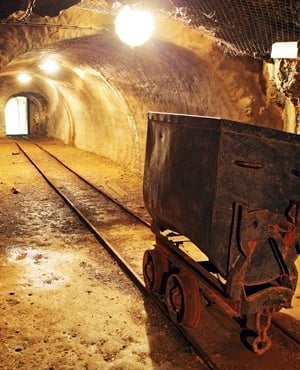
The road to a multibillion-rand class action against South Africa’s gold mining industry was cleared this week when mine workers suffering from silicosis or TB were certified as a class by a full Bench of judges in the South Gauteng High Court.
A recent unrelated settlement between Anglo American and a separate group of 4 365 mine workers saw provision for about R100 000 per claimant.
That values the class action at a minimum of R1.7 billion and a theoretical maximum of R50 billion.
According to the judgment, it is common cause that the potential claimants number between 17 000 – which is the number of signed-up clients in this case– and 500 000, a projection based on the number of mine workers and the known rates of silicosis since 1965.
However, Richard Spoor, the human rights lawyer who has driven the case for a decade, uses 100 000 as a working estimate of the total claimants and, if this turns out to be accurate, a payout in the event of a successful court ruling could be in the region of R10 billion.
The class action will in effect be two class actions – one for silicosis and one for TB. While mine dust is almost the exclusive cause of silicosis, holding mines liable for TB will be harder because it can be contracted elsewhere.
Silicosis is an incurable, progressive lung disease that can be caused by breathing in the silica dust released by drilling and blasting in mines.
Despite the progress, it will be at least another year before the historic silicosis class action goes to court.
According to Spoor, the summons for the class action was basically prepared already, and it would probably be filed before the end of the month, he told City Press on Friday.
It would not include a rands-and-cents claim.
The point now is to prove a claim by getting the court to declare the mines negligent.
“Then they [the mining companies] will plead. Then there will be discovery, where we and the companies disclose evidence and expert testimonies and so on,” said Spoor.
“It will probably take a year. A year from now, we should have an agreement on which question to try [in court] first. If we can’t agree, we’ll ask the court for directives.”
There were major legal questions to fight out, said Spoor. By far the most likely outcome is, however, a settlement agreement of some sort along the way. This would “make sense”, said Spoor.
The major companies targeted in the case have been having “discussions” with the mine workers’ lawyers since last year about what they call an ultimate “comprehensive solution” to all silicosis liabilities.
The court this week anticipated this and made it part of its ruling that “any settlement agreement reached by the parties shall only be of force and take effect if approved by this court”.
The judges also gave the thumbs up to the contingency fee agreements that the mine workers’ lawyers had submitted – giving them up to 15% of an eventual settlement.
Otherwise, the major legal battle ahead revolves around two main issues.
One is whether “strict liability” applies, which comes down to what you need to demonstrate to prove a case against the mines.
If strict liability applies, then the mere fact that a mine did not comply with a regulation on, for instance, dust limits will suffice to prove it negligent and liable for damages.
The other crucial issue is to make parent companies liable for what their subsidiaries did.
The biggest target in the class action is Anglo American. Anglo has been the dominant power in the industry because of all the companies it has owned. Most of the companies that operated the mines no longer exist.
“The subsidiaries have all been wound up. Only AngloGold Ashanti still exists and that is no longer a subsidiary of Anglo,” Spoor said.
After this week’s judgment, mine workers who fit the definition of the class will now automatically be part of the class action, but will have a short period of time to “opt out”.
The only real reason to do that would be if you think you can get a better settlement as an individual – a situation that could well apply to many workers in more skilled categories, who would historically mostly be white.
Even Spoor has a separate individual case involving a young skilled mine worker at Gold Fields’ mechanised South Deep mine in progress.
The reason is that the damages for lost earnings would probably end up being higher than what the rank and file of the class action members ultimately get – if they win.
The mining companies, which include Anglo American, AngloGold Ashanti, Sibanye, African Rainbow Minerals, Gold Fields and Harmony, were studying the judgment and were pursuing an out-of-court settlement, they said in a statement.
The court hearing for the certification took place in October last year and involved 41 counsel. The mines were ordered to pay the legal costs.
Recent research estimates that anything between 26% and 36% of underground gold mine workers eventually get silicosis and that 10% of current mine workers over 45 already have it.




 Publications
Publications
 Partners
Partners








